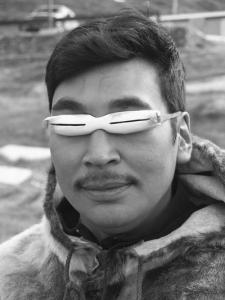 Ever heard of snow blindness? Maybe you have but thought, “I’m not at risk of that living in sunny Queensland!” This would be a common assumption given its name. But while it’s easy to discount the disease when the word ‘snow’ is mentioned, the scary fact is you don’t need snow to get snow blindness. Crazy, right?!
Ever heard of snow blindness? Maybe you have but thought, “I’m not at risk of that living in sunny Queensland!” This would be a common assumption given its name. But while it’s easy to discount the disease when the word ‘snow’ is mentioned, the scary fact is you don’t need snow to get snow blindness. Crazy, right?!
Here’s why it’s worth taking notice of this particular eye condition:
Snow blindness is caused by UV reflection NOT just from snow
From sunbaking and boating to skiing and hiking, any activity or climate that involves the reflection of sunlight can put you at risk of becoming snow blind.
While snow is particularly reflective (80% of the sun’s rays can bounce off it!) other surfaces like white sand and water can also put you at risk. This means Queenslanders can also experience snow blindness just as easily as those spending some time on the slopes at Thredbo.
A brief history of Snow Blindness
Eskimos and the Inuit people of the Arctic are at high risk of developing this condition. They became known for their innovative invention of the first ‘snow goggles’ to combat snow blindness around 2000 years ago. These curved goggles were designed to sit tightly against the face, Secured by a braided strap, t and therefore resulted in blocking light from all angles, except for a narrow slit at the front. Consequently, the benefits of the goggles were to:
- effect a ‘squint’ that minimised light and reflection; and
- assist the eye to focus on images at a long distance.
What is Snow Blindness exactly?
Formally known as Photokeratitis, snow blindness is likened to having your eyes get sunburnt. And, much like being sunburnt on your skin, Photokeratitis can take several hours before you start to notice any symptoms. Consequently, in many cases, additional damage is incurred before further exposure is avoided. This is not ideal!
Symptoms include:
- gritty or watery eyes
- burning sensations
- pain or discomfort
- temporary vision loss
Luckily, vision loss associated with this condition is temporary and usually resolves itself within 48 hours. Once again contrary to its name, it doesn’t actually lead to permanent ‘blindness’, however, it can significantly impair eyesight over the long term.
The good news
Snow blindness is entirely preventable. The best way to protect yourself is to avoid exposure to high levels of UV. However it that’s unavoidable, ensure your eyes are adequately protected with high-quality protective eyewear.
If you do happen to experience snow blindness, here are some simple treatment methods:
- Be careful to avoid rubbing your eyes
- Stay indoors and wear quality protective sunglasses whenever you’re outside
- Keep your eyes moistened (e.g. with artificial tears)
- Take over-the-counter pain killers if needed
- Use a cold wet washer or compress on your eyes to alleviate discomfort
- Seek advice from an eye health professional if symptoms persist beyond 48 hours.
So next time you’re sunbaking on a beautiful Queensland beach, fishing in your tinny, or sailing in the Whitsundays, remember to be safe and protect yourself against snow blindness!
For more information, or to enquire about treatment for this condition, contact the KindSIGHT team.

